Discover common coding mistakes like skipping code validation to help you write bug-free code. Build better websites with the expertise of QWERTYLABS.
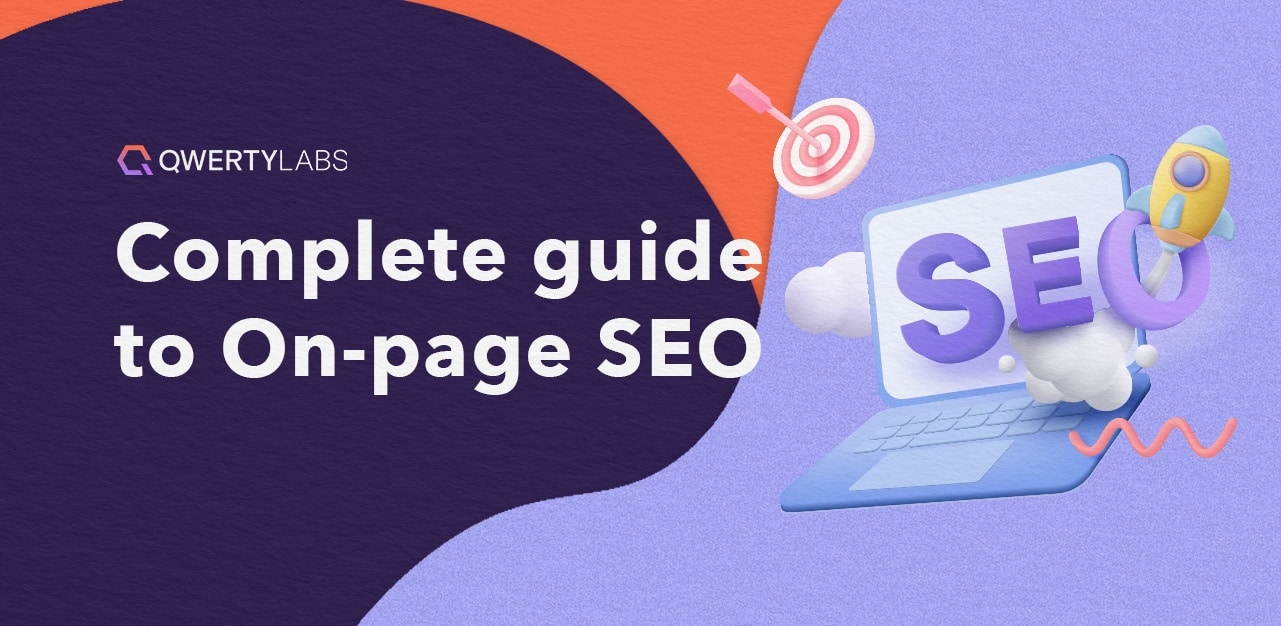
Creating content for your webpage is easy. What’s hard is creating content that Google and searchers want to see. On-page SEO is a process to optimise your web content to get more website traffic and rank higher on search engines. When done correctly, it brings visitors and customers to your website.
That’s why it’s important to know how on-page SEO works and how to optimise your website. Who doesn’t want to rank number 1 on search engines and get higher web page visitors? If you want to learn how to do on-page SEO, keep reading. This complete on-page SEO guide will help you rank higher and get more traffic, even if you are a beginner.
On-page SEO, also known as on-site SEO, optimises a site's different front-end and back-end components to rank higher in search engines and attract more site visitors. These components include web content, title tags, meta description and more.
The goal of on-page optimisation is to assist Google and searchers in better understanding and digesting your content. In effect, your page will rank higher on SERPs, entice searchers to click and make visitors dwell longer on your site. You should update your website and match high-quality content with optimised on-page SEO.
On-page SEO tells search engines like Google what your page contains and if it provides value to searchers. These are essential factors Google uses to determine whether a page matches a user's search intent. If your page is relevant and optimised, you rank higher on SERP, which means getting more clicks and visitors. That’s why it’s insufficient to create valuable content matching user intent. You must also optimise your on-page components to benefit your page’s discoverability and visibility on search engines and create organic traffic. In other words, you can convert casino leads to sales when prioritising both on-page optimisation and high-quality content creation. Plus, you’ll have higher authority as a Google-acknowledged site with high-ranking pages.
Off-page and on-page SEO are vital components Google considers when crawling, indexing and ranking your website. The difference between them is the area that needs to be optimised. Off-page SEO includes factors you can optimise outside your site to improve its ranking. This mainly includes building backlinks to establish web authority.
In comparison, on-page SEO is anything you can do internally on your webpage to raise your rankings. This includes using keywords, adding external links, writing relevant meta-descriptions and putting the title and heading tags to create a hierarchy. When optimised, all these factors help Google acknowledge your page’s relevance and rank you in SERP.

This optimisation process is not just about adding keywords to your web pages; it’s more than that. Google considers various factors when determining what a website is about and how it should be ranked. Because of this, you need strategies that ensure these elements will interact in ways that work for both users and search engines.
Here are the basic techniques you can do to optimise your on-page SEO and maintain your competitive edge:
One of the essential steps to SEO optimisation is creating high-quality content that matches the user's search intent. To do this, you must first conduct keyword research about your topic to know the relevant topics searchers look for. Only then can you write high-quality content using these keywords that Google will use when indexing your site.
This step might look like a daunting task, but it can be easy with the help of top SEO tools like Semrush. You can do keyword research and analysis here to get useful insight into the queries your target audience searches for on Google. Afterwards, you can write your content and use different KWs related to your topic and their variations. This will help your content rank higher on search engines.

One of the best keyword research tools is Semrush Magic Tool. To use it, enter the topic in the section provided and click the ‘Search’ button. Then, you’ll get a list of KWs related to your topic, sorted by the search volume. The example provided shows that ‘on-page SEO’ has a high search volume or user intent, meaning it is useful to target. But your decision in using a KW should also be based on the keyword difficulty (KD). The higher the KD score, the more difficult it is to rank with it.

Now that you know which KWs to use, you can avoid keyword stuffing or using the same keywords multiple times throughout the content. Otherwise, it will sound unnatural, which won’t be helpful to searchers and appealing to search engines. Keyword stuffing is no longer a ranking factor, but avoiding it ensures that your content is friendlier for both Google and readers, making it an essential part of SEO. To summarise, it’s best to keep a low KW density and use keywords only when relevant to the content.
Here are other keyword research tools that you can use besides Semrush Keyword Magic Tool:
Title tags are part of the HTML code that shows your page's title and appears in each webpage's head section. It’s what searchers usually see on search engine results pages (SERPs) as a clickable link. It’s one of Google’s ranking factors you can tweak to convince searchers to click on your page. If your target market reads the blue link in the SERP and finds it answers their query, they will likely click. That’s why the contents of your title tag can make or break a searcher's decision to click through to your site. You will lose valuable web traffic if your title tag isn’t click-worthy. Thus, it’s best to optimise your titles.
Here are ways to optimise your title tags:
To help you further, here are examples of optimised title tags.

The example above has 34 characters or 292px and shows what the page is about: 5 tips for writing engaging content.

The example above has 42 characters or 292px, showing that the page is about building a website through WordPress.
Just like the title tag, the meta description is an HTML element. It informs users and search engines with a relevant summary of the topic or page. You can see this metadata below the URL and title page on the search engine results page. The URL, title tags and meta descriptions are called the search snippet.
Even though meta description isn’t a ranking factor, it is still an important on-page SEO factor since it can influence your page's click-through rate (CTR). This metric tells the number of clicks your link gets on the SERP and affects the rank of your page. More clicks mean more visitors, which makes your site more competitive and authoritative.

Here are ways to optimise your meta descriptions:
To help you further, here are examples of optimised meta descriptions:

In this example, you can see that it includes a call to action ‘here’ to entice users to click right away and find out how to write meta descriptions. It also includes the references used, namely Google and official HTML specifications, to establish authority and legitimacy. Lastly, it fits the length requirement, so no information is cut off from the snippet.

Here’s another example summarising the article’s topic and including a call to action.
The header tag in your content introduces the sections below them. These headings and subheadings separate the body of your page into sections and detail what each one is about. This makes it easier for search engines to crawl and index your page. It's arranged by importance with heading 1 (H1) for the title, heading 2 (H2) for section titles, and until H6.
Even though header tags aren’t confirmed ranking factors, you still need to use them to organise your blog post. They help users browse your page and get a preview of your overall content. If they're looking for specific info on your page, they can quickly scroll through, find that section and go to it directly.
On the other hand, Google’s search algorithm can easily crawl your page thanks to the context and hierarchy heading tags provide. This results in a more readable, accessible and user-friendly page.
To optimise header tags, know first where you can use different headings. You can customise them depending on your content.
Here are ways to optimise your meta descriptions:
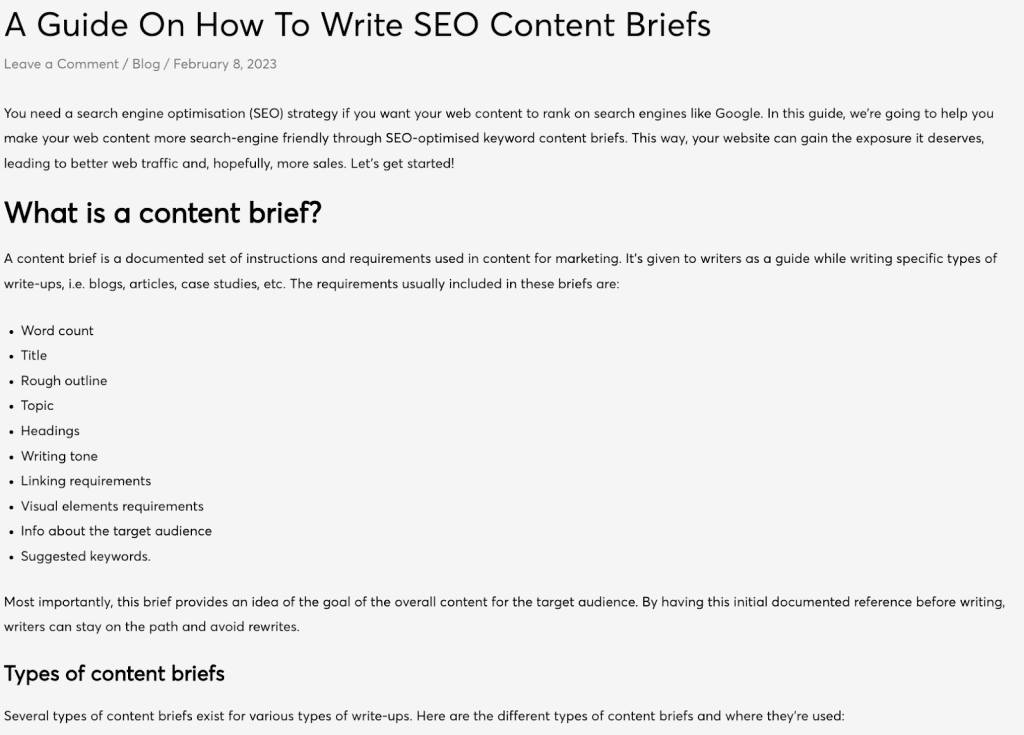
Here’s an example of using header tags in a content page for structure and easy browsing. The title is in H1, and the first section title is in H2, which is further divided into subsections with H3 titles.
This is the most important on-page SEO step you should remember––write high-quality content that matches user intent. Writing web content goes beyond just using your target keywords. Optimising your content ensures it ranks and reaches a larger audience. It includes using targeted keywords, writing the right length and emphasising readability in all content.
The more optimised your content is, the higher its page’s rank. That’s why writing engaging content for your target audience is a must. Doing so increases user engagement, a key factor search engines monitor to determine if your content benefits searchers.
One metric Google considers is dwell time, or how long a visitor spends on a page. If your target audience finds what they’re looking for in your content, they’ll stay longer on your page. The longer the dwell time, the higher your chances of converting web traffic to leads and sales.
Here are ways to have optimised and high-quality content:

One example of optimised content is the blog ‘The website QA checklist your casino needs in 2023’ by QWERTYlabs. It uses related keywords, such as the QA process, to match the search intent of the target keyword and has a Flesch score of 53.2%, which is respectable for a technical article. This page has a word count of over 2,500 words and has internal linking for better crawlability. It is authentic and helpful content for users searching about the ‘website QA process’ for casinos.
Including visual elements like images or videos in your content can add value to your web page. And as with the rest of its visible components, they also have to be optimised. When optimising images, you need to follow a specific format, include alt attributes and use descriptive file names, which can help Google know your image. All these steps make your content easier to read and more accessible to users with special conditions. With this data, search bots can also crawl and index your page more accurately. In effect, this improves your content’s user engagement, rankings and visibility in Google.
Here are techniques to have an optimised image:
Here’s an example of an optimised image with descriptive alt text.

Images from Image SEO
As you can see, the alt text includes a description of the image which bots can understand. This is the text screen readers read aloud, so visually-challenged users can still easily access it. If the file cannot load, this text will appear on the page instead to still give context.
URLs were once a ranking factor, but this doesn’t mean they’re irrelevant. They’re still part of your web page’s overall score. To optimise it, Google recommends using a simple URL with your domain name and target keywords in the URL slug to entice users and increase web traffic. Doing so also makes your web pages easily identifiable and shows that your site is trustworthy.
You also need to add canonical versions of URLs in your sitemap. A canonical tag, also referred to as ‘rel canonical,’ is a tag that tells search engines that a master copy of the page exists. Search engines use these canonical tags to index the correct URL and avoid duplicate content.
Here are ways to optimise your site’s URL:


Here’s an example of an optimised URL structure: https://qwertylabs.io/blog/complete-qa-checklist-for-casinos/. It starts with HTTPS, followed by the domain name, category and a URL slug with the main keyword. It’s short, brief and not truncated.
An internal link is a hyperlink that points to other helpful pages on your site. These are a valuable part of on-page SEO that helps search engines understand how pages are related so they can index your site better. This means you can improve your website's crawlability, user experience and chances of ranking higher in SERPs by optimising how you link to and from your pages.
The way you link your pages also shows which is your canonical page. Consistent internal linking makes finding the canonical URL easier for search engines. That’s why consistency between the canonical tags and the internal linking should exist.
Here’s how to optimise link building:

Here’s a snippet of a blog optimised with internal linking. All links are related to the content; the anchor texts reveal what you’ll find when you click them. Moreover, the site’s most important pages (services and contact us) are linked, emphasising hierarchy.
User experience or UX refers to what users experience and how they feel while using your site. It’s influenced by how your web page works and factors such as layout, design, interface, text, sound etc. It’s a metric you can get through web analytics.
Optimising UX makes your site navigable and more pleasing to the eyes. This improves the user experience of your visitors, which in turn, makes them inclined to stay longer on your page. When done correctly, quality user experience design ensures your site structure is optimised for better customer interactions. This eventually translates to a lower bounce rate and longer dwell time since it seamlessly delivers information.
Here are tips to optimise the user experience of your web page:
See the example of an optimised UX above. The text with sans serif font is spaced out for more effortless reading, while the varying font sizes make the content easier to skim. Moreover, the colours complement rather than contrast each other, making the colourful CTA banner stand out against the light grey background. It immediately gets your attention.
This is a process of optimising your web page to ensure it functions well and looks great on a mobile device. It involves using automated tools and testing the features and responsiveness of your site on different devices. This is important since 25% of users won’t visit your page if you don’t have a mobile-friendly site, according to statistics. So, if you have a mobile-friendly web page, you will have a positive perception from users. You’ll also be more accessible to a vast demographic of searchers.
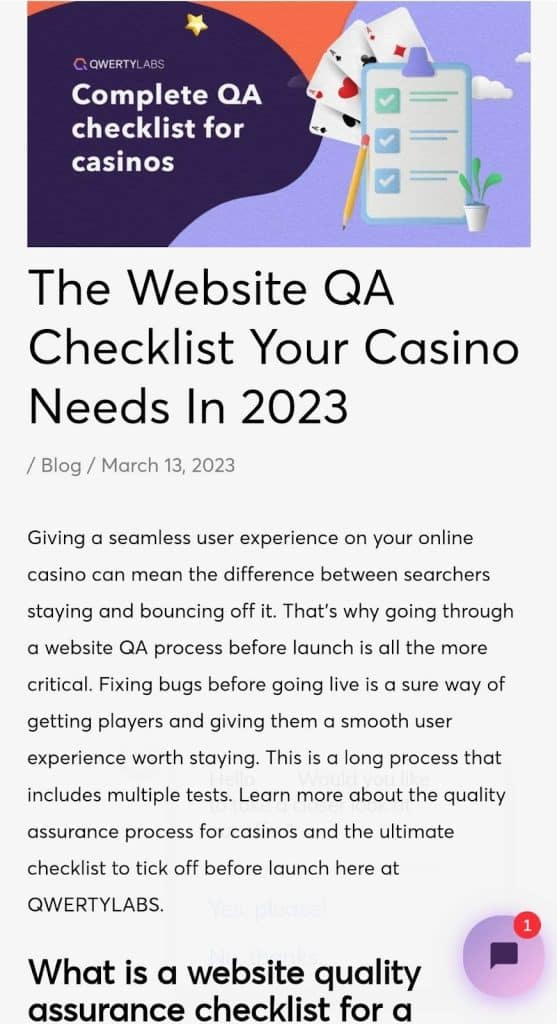
Here’s an example of an optimised website for mobile devices. The banner is the same size, unstretched and uncropped, while the text is well aligned and spaced out, just like in the web version. No element disrupts the viewing experience.

Page speed is the amount of time your page takes to load. The browser cache, image compression and page file size are some of the web factors that affect this. You can use web tracking tools to know the speed of your page. While it seems a small factor to consider, it influences your ranking, your page’s conversion rate, and the percentage of the total visitors. Moreover, studies have shown that you will have better conversions if you have a fast page speed. That’s why it’s crucial to optimise the speed of your site.
Example of optimised page speed

In this example, you’ll find the time it takes to load this page which is only milliseconds.
Schema markup is a technical language Google uses to understand the content on your pages. Using this turns your content into structured data, and lets search engines know what type of content you have. When Google understands your content, it can create rich snippets or enhanced descriptions on SERPs that increase your web page's visibility and click-through rates. Moreover, adding schema markup feeds and enhances your brand’s knowledge panel, which is the block of information on the right side of SERPs. This quickly informs searchers about your brand and helps your website stand out from your SEO competitors.
The most common schema markups are LocalBusiness/Organisation, FAQs, Products and Breadcrumbs. Adding any of these makes your SERP snippet more informative and eye-catching.
Example of optimised schema markup
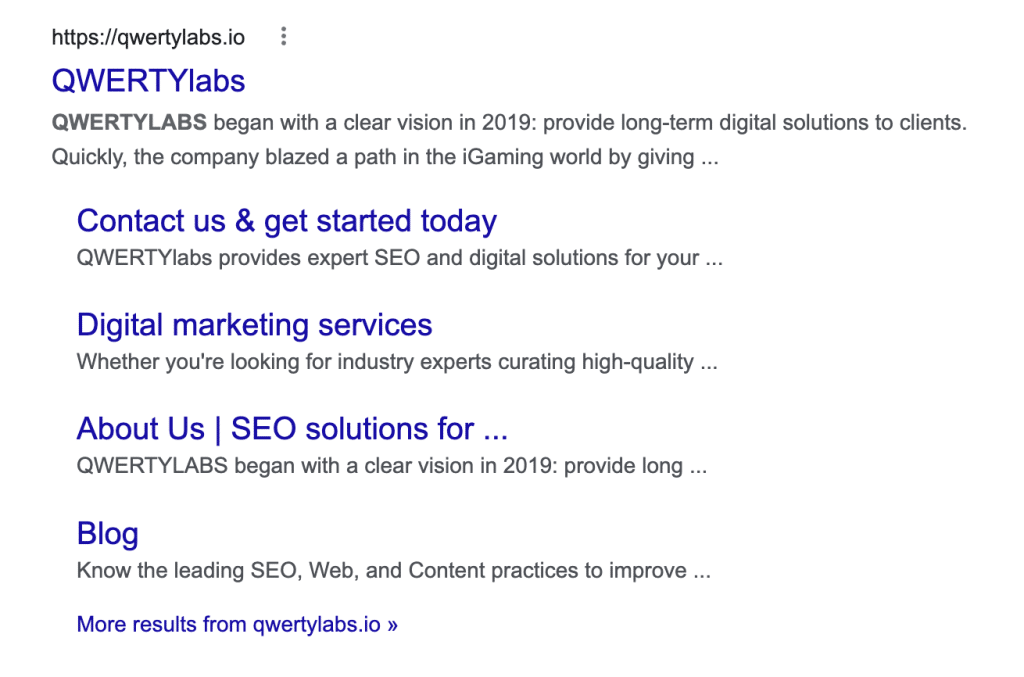
Here’s an example of a snippet when you use schema markup. All related links are displayed below the main page, which helps viewers know more about your site.
As you know now from this on-page SEO guide, ranking high on SERPs requires more than just publishing content. It involves being meticulous with ranking factors and elements that affect your page’s overall performance. Knowing the on-page SEO best practices is only the start. Doing them comes next. If you want your web page to rank higher than your competitor, here’s the checklist of what you need to optimise:
Every web page’s goal is to rank higher, and you can do that by optimising on-page SEO features like title tags, meta descriptions, header tags and more. Consider the checklist above as a list of on-page SEO techniques and recommendations for improving your pages and generating more sales. If your page has a low rank, we at QWERTYLABS can optimise all these for you. Trust that you’ll see improvements with the services we provide. Contact us today, and let’s discuss how to optimise your brand.
On-page SEO definition reveals it to be the process of optimising web pages to improve SERP rankings and generate more traffic to your website.
You can track the measure of your page’s success by using Google Analytics to check your metrics such as CTRs, organic traffic, keyword ranking, bounce rate and conversion rate, to name a few. You can also use other SEO tools like SEMrush and Ahrefs.
It is recommended to update your on-page SEO every quarter.
One of the common mistakes in on-page SEO is trying to rank the wrong KWs. Using high search volume KWs doesn’t mean your content will rank higher. When choosing which keywords to use, consider the KW difficulty, aside from the search volume. Another common mistake is neglecting site speed. Pages with slow site speeds have higher bounce rates which are bad since the goal is to make visitors stay on your site long enough to purchase your service or product.
Be in the know with Google updates since it pioneers all the changes in SEO. You can also leave that part to QWERTYLABS to avoid the hassle. We’ll make sure your site follows the latest trends and is up to the current standards.

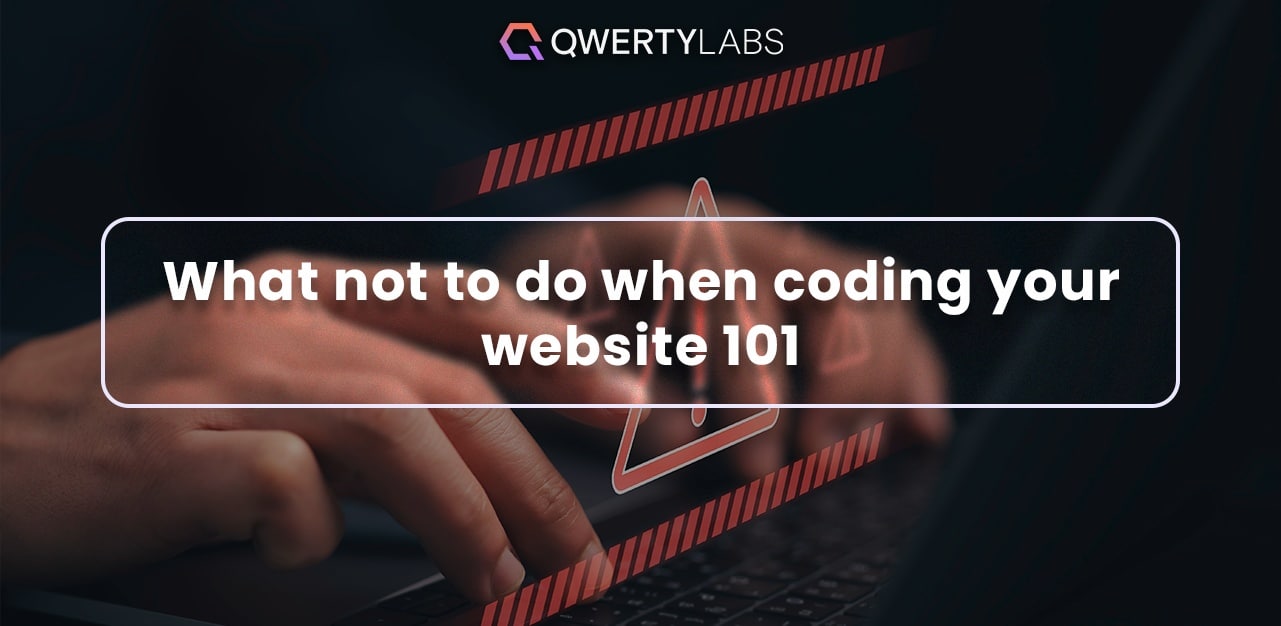 7 web coding mistakes every web developer should know
7 web coding mistakes every web developer should know
Discover common coding mistakes like skipping code validation to help you write bug-free code. Build better websites with the expertise of QWERTYLABS.
 Embrace the future of web development with web testing automation for your online casino
Embrace the future of web development with web testing automation for your online casino
Stop wasting time on manual web testing! Discover the efficiency of automation with QWERTYLABS. Explore tools, benefits, and trends for streamlined testing to improve your online casino brand.
 A guide to proper brand event marketing to elevate your business
A guide to proper brand event marketing to elevate your business
Engage your audience with the right brand event marketing strategy. Discover tips and tricks to create impactful events with QWERTYLABS.
8F, One Trium Tower,
Filinvest Avenue, Alabang, Muntinlupa, Metro Manila
Philippines, 1799
[email protected]
+63 (02) 8971 8926